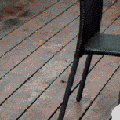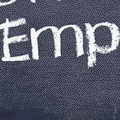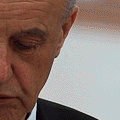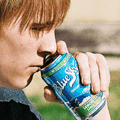Popovers
Examples
Add small overlays of content, like those on the iPad, to any element for housing secondary information.
Plugin dependency
Popovers require the tooltip plugin to be included in your version of Bootstrap.
Opt-in functionality
For performance reasons, the Tooltip and Popover data-apis are opt-in, meaning you must initialize them yourself.
Popovers in button groups and input groups require special setting
When using popovers on elements within a .btn-group or an .input-group, you'll have to specify the option container: 'body' (documented below) to avoid unwanted side effects (such as the element growing wider and/or losing its rounded corners when the popover is triggered).
Don't try to show popovers on hidden elements
Invoking $(...).popover('show') when the target element is display: none; will cause the popover to be incorrectly positioned.
Popovers on disabled elements require wrapper elements
To add a popover to a disabled or .disabled element, put the element inside of a <div> and apply the popover to that <div> instead.
Static popover
Four options are available: top, right, bottom, and left aligned.
Popover top
Sed posuere consectetur est at lobortis. Aenean eu leo quam. Pellentesque ornare sem lacinia quam venenatis vestibulum.
Popover right
Sed posuere consectetur est at lobortis. Aenean eu leo quam. Pellentesque ornare sem lacinia quam venenatis vestibulum.
Popover bottom
Sed posuere consectetur est at lobortis. Aenean eu leo quam. Pellentesque ornare sem lacinia quam venenatis vestibulum.
Popover left
Sed posuere consectetur est at lobortis. Aenean eu leo quam. Pellentesque ornare sem lacinia quam venenatis vestibulum.
Live demo
<button type="button" class="btn btn-lg btn-danger" data-toggle="popover" title="Popover title" data-content="And here's some amazing content. It's very engaging. Right?">Click to toggle popover</button>Four directions
<button type="button" class="btn btn-default" data-container="body" data-toggle="popover" data-placement="left" data-content="Vivamus sagittis lacus vel augue laoreet rutrum faucibus.">
Popover on left
</button>
<button type="button" class="btn btn-default" data-container="body" data-toggle="popover" data-placement="top" data-content="Vivamus sagittis lacus vel augue laoreet rutrum faucibus.">
Popover on top
</button>
<button type="button" class="btn btn-default" data-container="body" data-toggle="popover" data-placement="bottom" data-content="Vivamus
sagittis lacus vel augue laoreet rutrum faucibus.">
Popover on bottom
</button>
<button type="button" class="btn btn-default" data-container="body" data-toggle="popover" data-placement="right" data-content="Vivamus sagittis lacus vel augue laoreet rutrum faucibus.">
Popover on right
</button>Dismiss on next click
Use the focus trigger to dismiss popovers on the next click that the user makes.
<button type="button" class="btn btn-lg btn-danger popover-dismiss" data-toggle="popover" title="Dismissible popover" data-content="And here's some amazing content. It's very engaging. Right?">Dismissible popover</button>$('.popover-dismiss').popover({
trigger: 'focus'
})Multiple-line links
Sometimes you want to add a popover to a hyperlink that wraps multiple lines. The default behavior of the popover plugin is to center it horizontally and vertically. Add white-space: nowrap; to your anchors to avoid this.
Usage
Enable popovers via JavaScript:
$('#example').popover(options)Options
Options can be passed via data attributes or JavaScript. For data attributes, append the option name to data-, as in data-animation="".
| Name | Type | Default | Description |
|---|---|---|---|
| animation | boolean | true | Apply a CSS fade transition to the popover |
| container | string | false | false |
Appends the popover to a specific element. Example: |
| content | string | function | '' |
Default content value if If a function is given, it will be called with 1 argument, which is the element that the popover is attached to. |
| delay | number | object | 0 |
Delay showing and hiding the popover (ms) - does not apply to manual trigger type If a number is supplied, delay is applied to both hide/show Object structure is: |
| html | boolean | false | Insert HTML into the popover. If false, jQuery's text method will be used to insert content into the DOM. Use text if you're worried about XSS attacks. |
| placement | string | function | 'right' | How to position the popover - top | bottom | left | right | auto. When "auto" is specified, it will dynamically reorient the popover. For example, if placement is "auto left", the popover will display to the left when possible, otherwise it will display right. |
| selector | string | false | If a selector is provided, popover objects will be delegated to the specified targets. In practice, this is used to enable dynamic HTML content to have popovers added. See this and an informative example. |
| template | string | '<div class="popover" role="tooltip"><div class="arrow"></div><h3 class="popover-title"></h3><div class="popover-content"></div></div>' |
Base HTML to use when creating the popover. The popover's The popover's
The outermost wrapper element should have the |
| title | string | function | '' | Default title value if title attribute isn't present |
| trigger | string | 'click' | How popover is triggered - click | hover | focus | manual. You may pass multiple triggers; separate them with a space. |
| viewport | string | object | { selector: 'body', padding: 0 } |
Keeps the popover within the bounds of this element. Example: |
Data attributes for individual popovers
Options for individual popovers can alternatively be specified through the use of data attributes, as explained above.
Methods
$().popover(options)
Initializes popovers for an element collection.
.popover('show')
Reveals an elements popover.
$('#element').popover('show').popover('hide')
Hides an elements popover.
$('#element').popover('hide').popover('toggle')
Toggles an elements popover.
$('#element').popover('toggle').popover('destroy')
Hides and destroys an element's popover.
$('#element').popover('destroy')Events
| Event Type | Description |
|---|---|
| show.bs.popover | This event fires immediately when the show instance method is called. |
| shown.bs.popover | This event is fired when the popover has been made visible to the user (will wait for CSS transitions to complete). |
| hide.bs.popover | This event is fired immediately when the hide instance method has been called. |
| hidden.bs.popover | This event is fired when the popover has finished being hidden from the user (will wait for CSS transitions to complete). |
$('#myPopover').on('hidden.bs.popover', function () {
// do something…
})













Recent comments